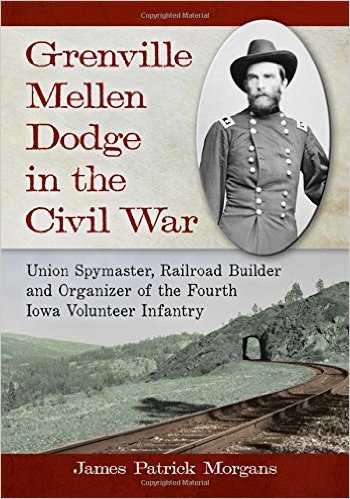American Civil Wars: The United States, Latin America, Europe, and the Crisis of the 1860s edited by Don H. Doyle. The University of North Carolina Press, 2017. Paper, ISBN: 9781469631080. $27.95.
 American Civil Wars: The United States, Latin America, and the Crisis of the 1860s edited by Don H. Doyle models how to situate the Civil War in a global context. Building on current scholarly efforts to emphasize the international and transnational contexts of modern national histories, this volume reminds readers that people living outside of the physical borders of the Civil War era United States asked many of the same questions as the people living within those shifting borders. Essay contributors diligently employ a plethora of evidence to convincingly argue that, “This book takes readers away from the battlefields and political debates in the United States to view the conflict as part of a larger global crisis that seized the Atlantic world in the 1860s” (1).
American Civil Wars: The United States, Latin America, and the Crisis of the 1860s edited by Don H. Doyle models how to situate the Civil War in a global context. Building on current scholarly efforts to emphasize the international and transnational contexts of modern national histories, this volume reminds readers that people living outside of the physical borders of the Civil War era United States asked many of the same questions as the people living within those shifting borders. Essay contributors diligently employ a plethora of evidence to convincingly argue that, “This book takes readers away from the battlefields and political debates in the United States to view the conflict as part of a larger global crisis that seized the Atlantic world in the 1860s” (1).
The volume’s eleven essays highlight three main international sites of turbulence in the 1860s: the debates over the futures of slavery, the Republican experiment, and intrusions of European power into Latin America. Matt D. Childs argues in his essay, “Cuba, the Atlantic Crisis of the 1860s, and the Road to Abolition,” that the American Civil War “most certainly created a crisis that catalyzed and accelerated the end of Cuban slavery” (206). Hilda Sabado concludes in “Arms and Republican Politics in Spanish America” that, “The political no longer referred to a transcendent-divine instance; it was considered a human construct” (186). “France’s Grand Design and the Confederacy” by Stève Sainlaude posits, “The American Civil War suddenly neutralized the Unites States, which opposed European interference on the American continent, and presented France with the possibility of an independent Confederacy hostile to the United States. It was an ideal opportunity for ‘the Grand Design’ to be launched” (108). By centering on these points of crisis over slavery, forms of governance, and European power in the Americas, American Civil Wars repositions the U.S. Civil War as a factor in the “entangled histories” of other regions in Europe and in Latin America (11).
This framework of “entangled histories” is the main strength of American Civil Wars. Rooting their analysis in an expansive array of sources from countries such as Britain, the United States, France, Mexico, Brazil, and Spain, this book’s authors establish a convincing narrative of 1860s interconnectivity. Richard Huzzey’s “Manifest Dominion” balances historical entanglements to claim, “The rise or demise of the errant American republic was an arresting crisis of this period, but it can only be understood in the context of British calculations regarding the threat of French and Spanish imperialism in Latin America, the postemancipation policies of Britain’s’ supposedly ‘antislavery empire,’ and the internal crises of their own colonies” (82). “The Cat’s-Paw” by Patrick J. Kelly contends, “The perception that the slaveholders had dramatically weakened their region on the hemispheric stage by breaking from the United States played a key role in shaping the diplomacy of Madrid toward the Confederate rebellion during the Civil War” (64). Significantly, the essays in this book, such as Christopher Schmidt-Nowara’s “From Aggression to Crisis,” employ “entangled histories” to recognize that the U. S. Civil War did not have to directly cause crises in order to dovetail with other conflicts in the Atlantic world (137). As Don H. Doyle concludes in this book’s introduction, “The crosscurrents of causation and influence did not always flow outward from the United States. They ran in various directions across the web of entangled histories” (3).
The analysis and findings in American Civil Wars invite readers to rethink many ideas, about a topic as well researched as the U. S. Civil War. Jay Sexton asks in “The Civil War and U.S. World Power,” “Could the awesome national power that was harnessed to crush secession be mobilized on behalf of other objectives?” (24) “Wrapping the World in Fire” by Howard Jones highlights the historical question, “What might [Britain and France] gain from a divided and perhaps disabled nation?”(34) Rafael Marquese explores how the U.S. Civil War prompted the crisis of slavery in Brazil in “The Civil War in the United States and the Crisis of Slavery in Brazil” (223). Through questions such as these, contributors to American Civil Wars consciously position their work as a starting point for future conversations about the Civil War’s global context (11).
The essays in this volume equip students and teachers of history to ask their own questions about the Civil War and its global context. Each essay includes a list of suggested readings for further research. Furthermore, a companion website organizes additional sources according to regions and themes and welcomes source citation submissions from readers.
American Civil Wars revels in the breadth of its scholars’ research, inquiry, and collaboration. It does indeed overcome “the often forbidding frontiers of academic specialization” (xi). Most importantly, this commendable contribution to understandings of the transnational and global contexts of the U. S. Civil War encourages scholars, students, and general readers to research, inquire, and collaborate too.
Claire Wolnisty is Assistant Professor of History at Angelo State University.




